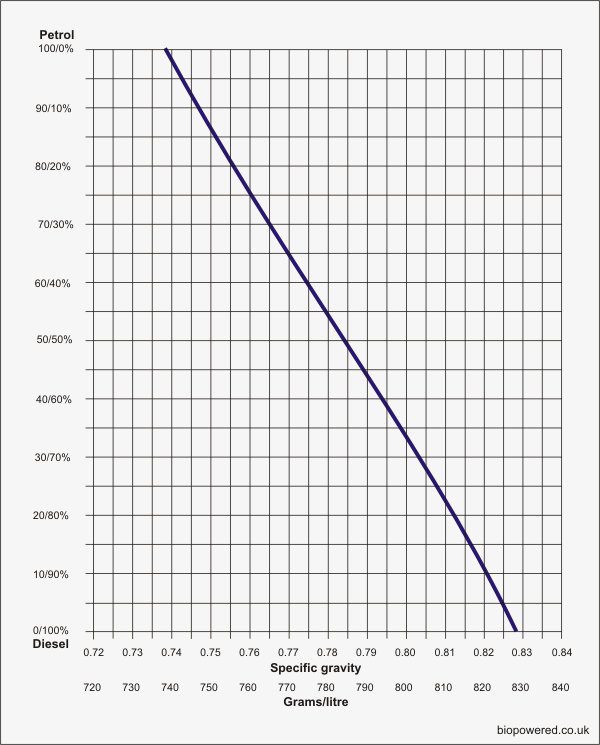Calculating misfuel ratio
Every year in the UK around 150,000 motorists fill a diesel car with petrol by mistake and the number is growing year on year. As Biodiesel home brewers and veg users we know most diesel engines will run with a small percentage of petrol (RUG) mixed in with the diesel usually up to 5%, but higher percentages can cause expensive damage to many modern diesels. This mixture of fuels is called misfuel.
The remedy for most motorists is to call a breakdown service or limp to a nearby garage to have the tank drained and replenished with the correct fuel. For many garages, this misfuel is often difficult to dispose of, but it can be a cheap or free source of veg oil thinner or Biodiesel winteriser.
Contents
Before using misfuel it's best to know the proportions of petrol and diesel in the mix. At the time of writing, two independent sets of tests have been conducted by zebedee and Rotary Motion to ascertain the percentage of each based on the specific gravity (SG) of the mix. The SG of pump bought fuels varies quite a bit, so the graph below, which is an average of the two tests, can only be considered as an indication of the mix ratio, not and absolute measurement. It is assumed that tests were carried out at between 17°C and 20°C.
Examples of how to use the graph
